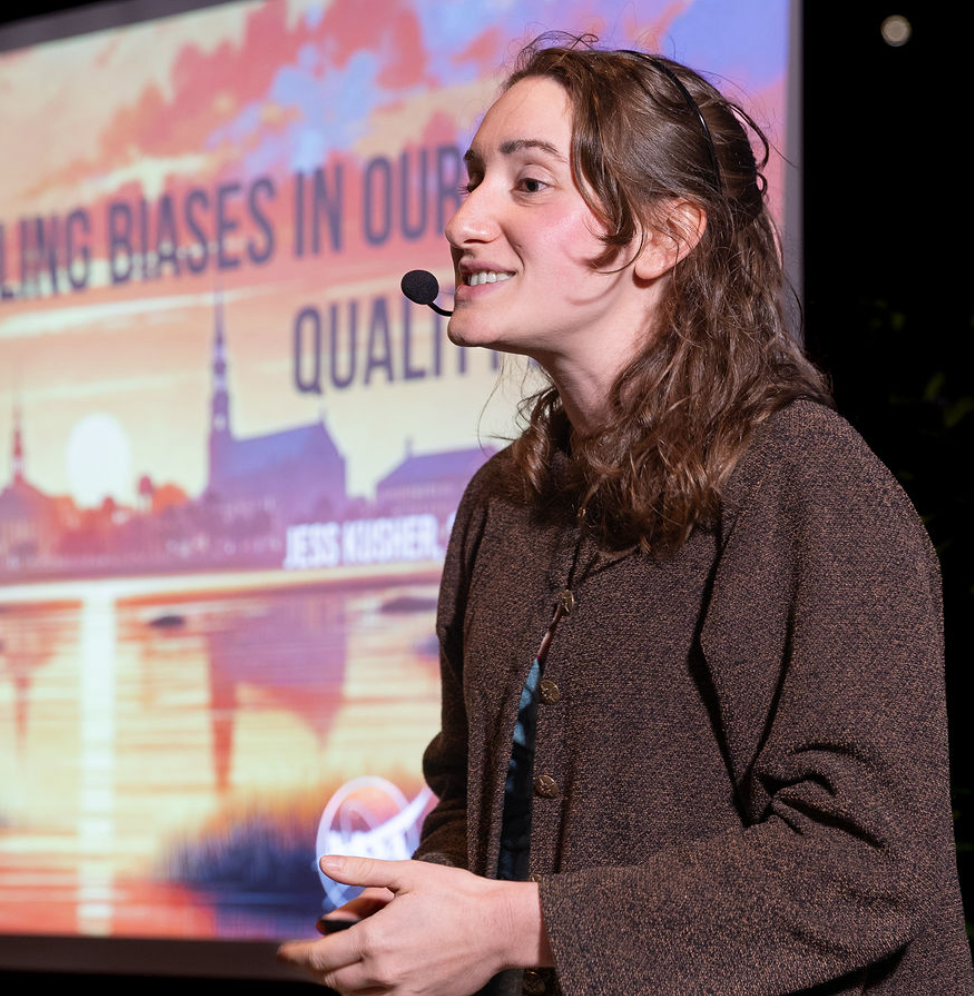Science Street Art - Unveiling Biases In Our Water Quality Data
- Cultivate SciArt
- Feb 27, 2024
- 4 min read
February 27th, 2024 at Maybank Public House, Charleston, SC.
Jesseca Kusher, marine biologist, College of Charleston, Graduate Program in Marine Biology
Marielena Martinez, MFA, local teaching artist and STEAM educator with Cultivate SciArt

Even as they glisten, it's hard to know what lurks below the waters unless we take a closer look. Local scientists have been investigating Charleston’s waterways for decades. But Jesseca Kusher, a Master’s Candidate in the College of Charleston's Graduate Program in Marine Biology, asked some new questions: Are Lowcountry water quality studies targeting areas of socioeconomic diversity? Where are water quality data being measured relative to where the public recreates, fishes, swims, and enjoys our waterways? Where are we detecting these contaminants? And what might be getting overlooked? As we pondered these questions, teaching artist Marielena Martinez gave us an overview of street art’s history bringing community voices into the public’s eye. Creative juices flowed as participants up-cycled old maps by adding gradients of colors, words and graphics to share their messages about Charleston's waterways!
Toxic metals, microplastics, persistent chemicals, organic blooms and pathogens – Oh my!!
Let's Dig into the Science:

What is water quality?
Jess Kusher and other scientists advocate how water quality is crucial for a healthy ecosystem. Water quality can be measured by several factors, such as the concentration of dissolved oxygen, bacteria levels, quantity of microscopic algae, pesticides, herbicides, heavy metals, microplatstics, and persistent chemicals..
Why is it important to prevent water pollution?

Clean water is vital for drinking, supports diverse plants and wildlife, as well as boosts recreation and tourism. Understanding data and taking action helps communities assess their water's condition and address threats. And, here in Charleston, water is a big part of our community! Water is a part of our identity and way of life. However, unchecked pollution, wetland destruction, and urban development have degraded water quality. Climate change worsens these issues.
Environmental Justice?

Jesseca Kusher performed a metareview on Charleston's water quality to better understand the question: Are water quality studies targeting areas of socioeconomic diversity? Kusher took a deep dive into our waterways, performing an extensive literature review, local news review, and looked into local WQ Databases. What she found in her preliminary data (the first information collected during the early stages of research) was unsettling! She found that there was a statistically significant relationship between where study sites were conducted and income level (Burwell-Naney et al., 2013). Taking a closer look into Charleston water quality history, Kusher advocates that there is a need increased public awareness for areas of low water quality, stating that we are bias when it comes to where we study water in the Charleston Harbor Estuarine System since areas of higher income see more water quality assessments.

Dig into the Art:
Street Art!
Marielena Martinez, MFA, introduced us to the history of street art! Street art has a rich and diverse history that dates back to ancient civilizations, but it gained prominence as a form of contemporary artistic expression in the latter half of the 20th century. We are seeing that street art continues to evolve and adapt to societal changes, reflecting the dynamic relationship between art, public spaces, and cultural identity! Can you see the evolution of street art?


You can make your own version of street art that reflects your identity, culture, and passion for protecting our local waterways!
Want to make your own art at home or in the classroom?
First, find some maps of your local city and any drawing materials you would like to use.
Then, let your creativity flow like water! Draw, outline, create anything that speaks to you or any message you would like to show through your art!
Maybe you outline the streets, waterways, or draw a symbol, animal, or face! The options are endless!
We would love to see your artwork! Tag us @CultivateSciArt!
Thank you to our great Community Partners for this event!
They are doing the hard work of improving access, knowledge, and protection of our waterways!

Charleston Waterkeeper’s mission is to protect and restore our waterways so we can fish and swim without harm from pollution. Their weekly monitoring of 20 sites across the Charleston estuary system informs the public, enables data-driven advocacy, prioritizes clean-up efforts and boots-on-the-water collaborations for local scientists. Meet your waterkeepers and ways to get involved.

Casual Crabbing With Tia has gained national acclaim for providing a unique lowcountry experience connecting individuals to the riches of our waterways. Tia Clark, a Charleston native, combined her passion for outdoors and marine life with generations of family experience crabbing and casting. Whether for fun or for food, participants also learn about water quality and conservation along the way.
Check out the fun we had exploring Science Street Art - Unveiling Biases In Our Water Quality Data! Click here for more event photos.
New Date for Public Access Takeover! - April 11th


Dip your toes in the water at Higgins Pier and find new ways to engage with your local waterways! Kayak with guides at Charleston Kayak, learn about crabbing, fishing, and water quality from our friends at Casual Crabbing with Tia, and Youth 2 Ocean! For more info click here.
**** Join Our Blog Community! ****
Sign up using link in upper right corner to add comments, ask questions, and get updates as new information is shared in our logbook. Members may also request copies of presentation slides, add photos and much more! Join and help to CULTIVATE Science + Art + Community, because it takes a village to grow and make change.












Comments